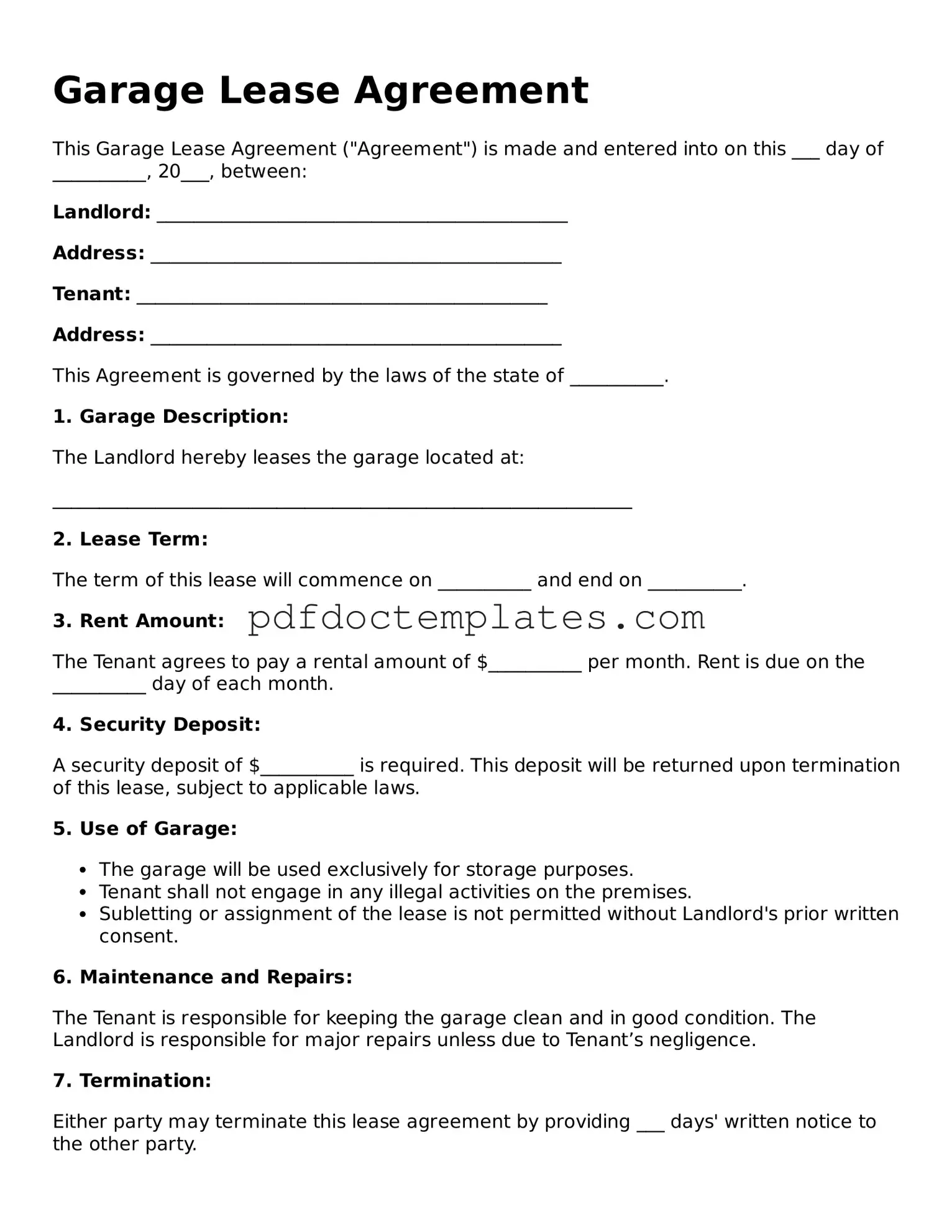Garage Lease Agreement
This Garage Lease Agreement ("Agreement") is made and entered into on this ___ day of __________, 20___, between:
Landlord: ____________________________________________
Address: ____________________________________________
Tenant: ____________________________________________
Address: ____________________________________________
This Agreement is governed by the laws of the state of __________.
1. Garage Description:
The Landlord hereby leases the garage located at:
______________________________________________________________
2. Lease Term:
The term of this lease will commence on __________ and end on __________.
3. Rent Amount:
The Tenant agrees to pay a rental amount of $__________ per month. Rent is due on the __________ day of each month.
4. Security Deposit:
A security deposit of $__________ is required. This deposit will be returned upon termination of this lease, subject to applicable laws.
5. Use of Garage:
- The garage will be used exclusively for storage purposes.
- Tenant shall not engage in any illegal activities on the premises.
- Subletting or assignment of the lease is not permitted without Landlord's prior written consent.
6. Maintenance and Repairs:
The Tenant is responsible for keeping the garage clean and in good condition. The Landlord is responsible for major repairs unless due to Tenant’s negligence.
7. Termination:
Either party may terminate this lease agreement by providing ___ days' written notice to the other party.
8. Governing Law:
This Agreement shall be governed by and construed in accordance with the laws of the state of __________.
IN WITNESS WHEREOF, the parties hereto have executed this Garage Lease Agreement as of the date first above written.
__________________________ (Landlord Signature) Date: __________
__________________________ (Tenant Signature) Date: __________
